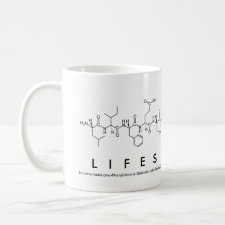
Authors: Yang JC, Lee J, Hong SW, Park J
Article Title: Molecularly imprinted quartz crystal microbalance sensors with lithographically patterned frisbee-like pillar arrays for sensitive and selective detection of iprodione.
Publication date: 2020
Journal: Sensors and Actuators B: Chemical
Volume: 320
Article Number: 128366.
DOI: 10.1016/j.snb.2020.128366
Alternative URL: https://www.sciencedirect.com/science/article/pii/S0925400520307115
Abstract: Despite being one of the most widely used fungicides in the agricultural industry, iprodione is a known water pollutant, and its continuous release into water sources is detrimental to human health. In this study, sensitive molecularly imprinted quartz crystal microbalance (MIP-QCM) sensors were prepared by fabricating two types of frisbee-like pillar patterns (MIP-3 μm and MIP-5 μm) onto the surface of gold quartz crystals for the real-time detection of iprodione in aqueous solutions. This study describes the synthesis of iprodione-imprinted poly(methacrylic acid-co-2-(trifluoromethyl)acrylic acid-co-ethylene glycol dimethacrylate), referred to as poly(MAA-co-TFMAA-co-EGDMA), in combination with a micro-contact printing technique (μ-CP), via ultraviolet (UV)-assisted photopolymerization. The patterned surfaces with increased surface-to-volume (S/V) ratio were characterized via atomic force microscopy (AFM), scanning force microscopy (SEM), and Fourier-transform infrared spectroscopy (FTIR). The planar imprinted films and the corresponding non-imprinted films were prepared as the control samples for evaluating the sensor's detection capabilities. According to the results, the MIP-QCM sensors had enhanced detection capabilities compared to their planar MIP counterparts owing to the increased binding affinity on the structured surfaces. The imprinting factor (IF) (i.e., Qe,MIP/Qe,NIP) indicated that the imprinting effects for each MIP film was comparatively assessed, resulting in the following order: 1.69 (MIP-plane) <2.21 (MIP-5 μm) <2.74 (MIP-3 μm). The LOQ and LOD values were 54.407 and 17.954 nM-1 (MIP-plane), 24.624 and 8.126 nM-1 (MIP-5 μm), and 62.423 and 20.600 nM-1 (MIP-3 μm). The binding affinity of the iprodione MIP films was evaluated using the Freundlich isotherm model, and the template amount detected in an iprodione aqueous solution ranged between 30 and 303 nM. Furthermore, the selectivity of the patterned MIP films for iprodione detection was also investigated in aqueous solutions in the presence of two other fungicides: pyrimethanil and procymidone
Template and target information: iprodione
Author keywords: Molecularly imprinted polymers, lithography, PDMS molds, Iprodione, Pillar patterns, Freundlich isotherm



Join the Society for Molecular Imprinting

New items RSS feed
Sign-up for e-mail updates:
Choose between receiving an occasional newsletter or more frequent e-mail alerts.
Click here to go to the sign-up page.
Is your name elemental or peptidic? Enter your name and find out by clicking either of the buttons below!
Other products you may like:
 MIPdatabase
MIPdatabase









